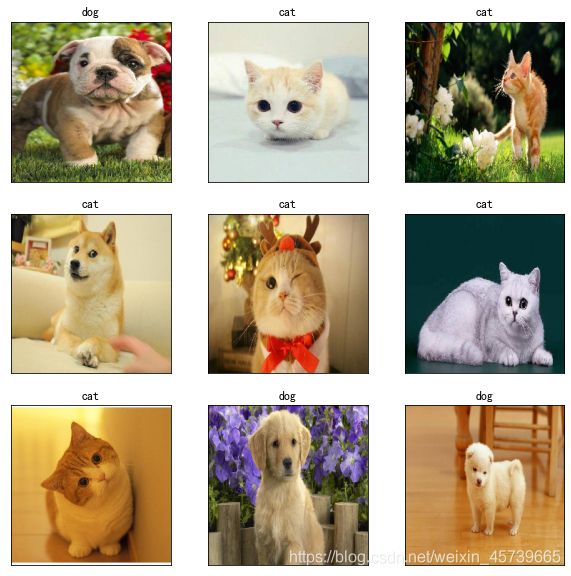目录
-
-
- 一、图像卷积运算
-
- 二、池化(Pooling)
-
- 三、卷积神经网络(Convolution Neural Network)
-
- 四、图像填充
-
- 五、经典的CNN模型
-
- 5.1LeNet-5
- 5.2AlexNet
- 5.3VGG-16
- 5.4如何做
- 六、任务
-
- 6.1基于数据,建立cnn模型,实现猫狗识别
- 6.2基于数据,利用VGG16结构,提高猫狗识别的准确率
一、图像卷积运算
1.1定义
- 图像的卷积(convolution)运算,即通过对图像矩阵与滤波器矩阵进行对应相乘再求和运算,可实现图像中特定轮廓特征的快速搜索
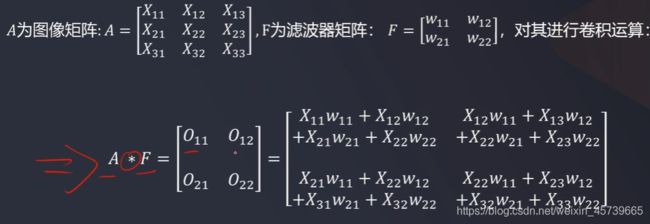
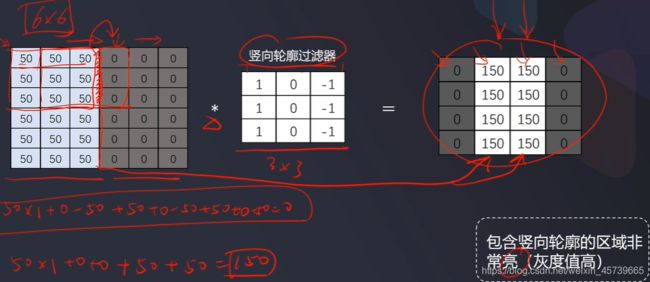
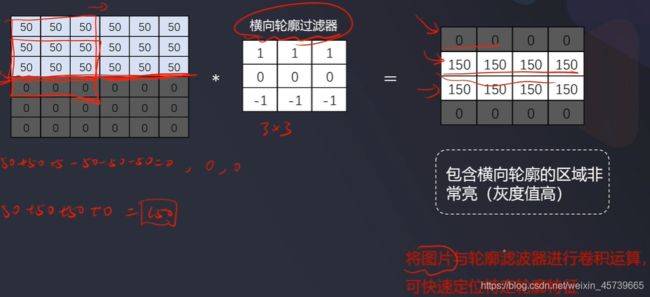
1.2核心
- 寻找适合的轮廓过滤器:计算机根据训练图片及其类别,自动寻找合适的轮廓过滤器,再使用该过滤器去寻找图像轮廓用于判断新图片所属类别
- 最小化输出损失函数的过程,也是寻找合适w的过程,即寻找合适的过滤器
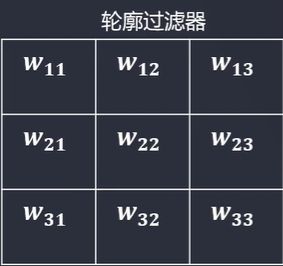

1.3彩色图的卷积运算
- RGB图像的卷积:对R/G/B三个通道分别求卷积再相加
- 红绿蓝三通道图片,经过一个过滤器的卷积运算后,变成一个通道
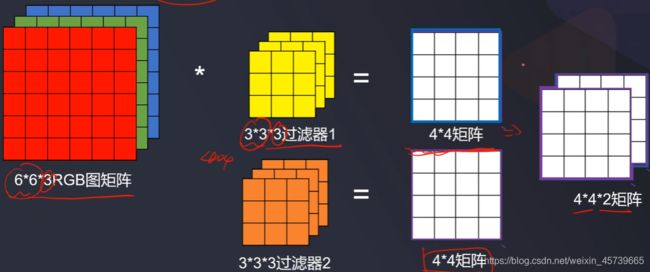
二、池化(Pooling)
- 思考:一张图片中很多信息是不重要甚至重复多余的,使用所有像素点数据会增加运算量、可能导致过拟合、降低模型的容错性
2.1定义
- 池化:也称为欠采样或下采样,指按照一定的规则对图像矩阵进行处理,实现信息压缩与数据降维,减少过拟合,同时提高模型的容错性
2.2池化的方法
- 最大法池化(Max-pooling):选择窗口中最大的数值[pooling_size:(2,2)窗口的大小,stride:(2,2)移动的步长]

- 平均法池化(Avg-pooling):取平均值

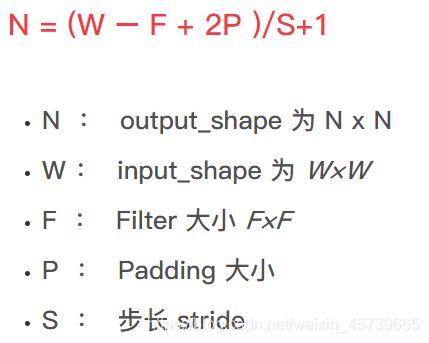

三、卷积神经网络(Convolution Neural Network)
3.1核心
- 把卷积、池化、MLP先后连接在一起,组成一个能够高效提取图像重要信息的神经网络
- 卷积之后、池化之前会增加激活函数以筛选保留重要信息,通常选用Relu函数(使部分神经元为0,过滤噪音信息,防止过拟合;迭代快、易于求解)

3.2卷积神经网络两大特点
- 参数共享(parameter sharing):同一个特征过滤器可用于整张图片
- 稀疏连接(sparsity of connections):生成的特征图片每个节点只与原图片中特定节点连接
四、图像填充
4.1图像卷积的两个常见问题
4.2图像填充核心
- 通过在图像周边添加新的像素,使边缘位置图像信息得到更多的利用
- 通过padding增加像素的数量,由过滤器尺寸与stride决定

五、经典的CNN模型
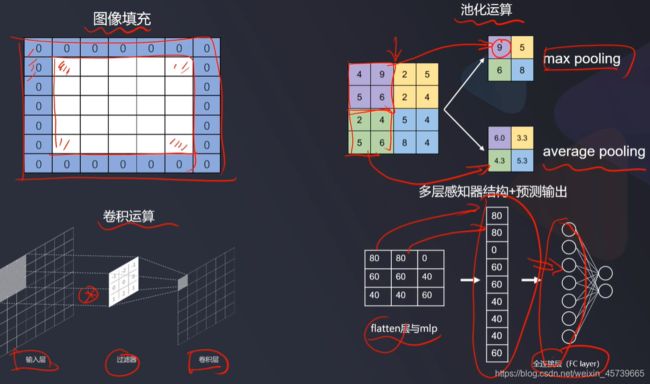
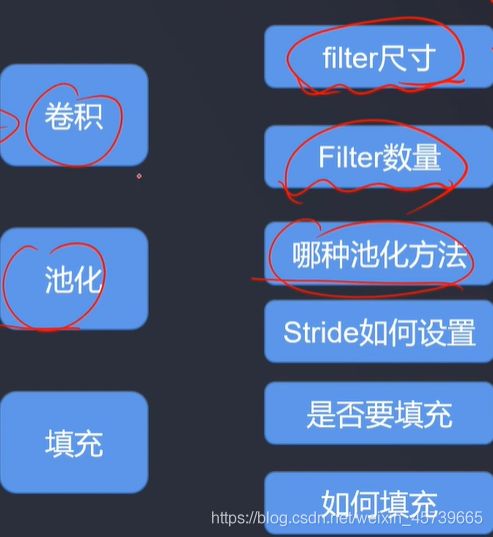
5.1LeNet-5
- 处理简单灰度图像
- 输入图像:32X32灰度图,1个通道
- 训练参数:约60000个
- filter均为5*5(S=1)、池化为avg pool(f=2,s=2),卷积与池化先后成对使用
- 随着网络越深,图像的高度和宽度在缩小,通道数在增加

5.2AlexNet
- 输入图像:227X227X3 RGB图,3个通道
- 训练参数:约60000000个
- 引入图像填充,采用max pool
- 更为复杂的结构,能够提取出更丰富的特征
- 适用于识别较为复杂的彩色图,可识别1000种类别
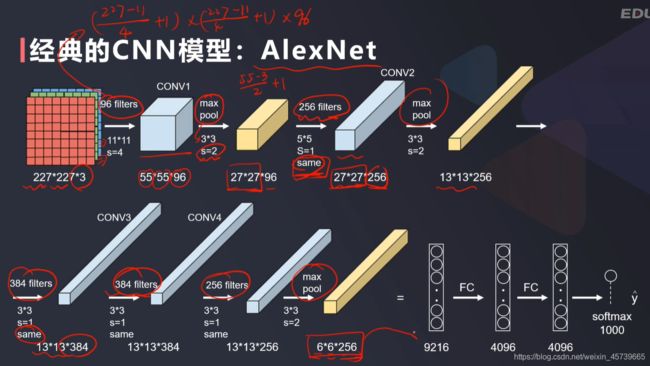
5.3VGG-16
- 输入图像:224X224X3 RGB图,3个通道
- 训练参数:约138000000个
- filter均为3*3,步长为1,卷积前均使用了图像填充padding(same convolution);
- 池化均为max pool,窗口尺寸均为2*2,步长都是2
- 使用更多的filter提取轮廓信息,进一步提高识别准确率
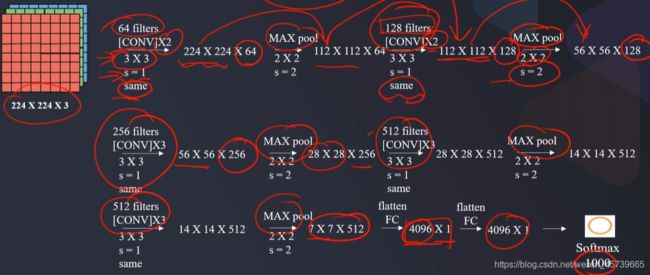
5.4如何做
- 参考经典的CNN结构,将其核心思想运用到新模型设计
- 使用经典的CNN模型结构提取图像重要轮廓,再建立MLP模型
- 加载经典的CNN模型,剥除其FC层,用于提取图像的重要轮廓信息
- 把经过模型处理后的数据作为输入,分类结果为输出,建立MLP模型
- 模型训练,寻找图片不同类别对应的关键信息
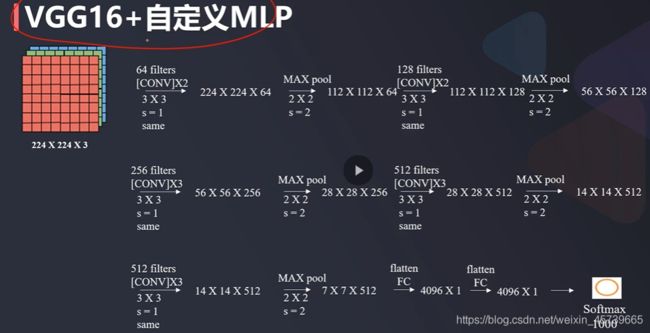
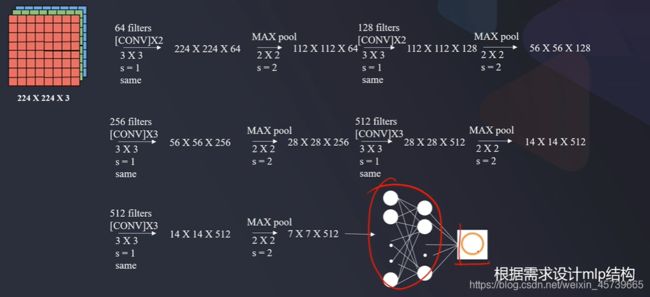
六、任务
6.1基于数据,建立cnn模型,实现猫狗识别
- 通过ImageDataGenerator模块,实现本地图片批量加载
- 查看数据基本结构,可视化加载后的样本图片
- 建模并训练模型(迭代20次),计算训练集、测试集准确率
- 对提供的1-9猫/狗的图片,进行预测
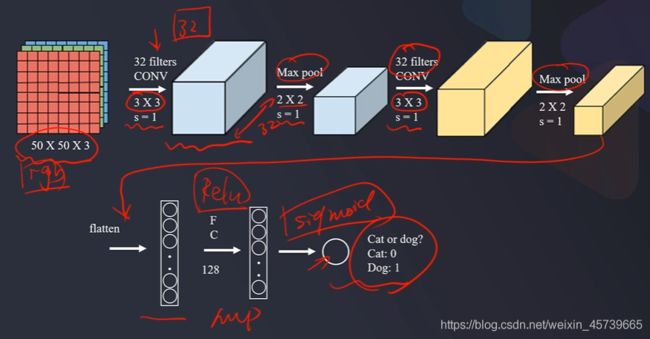
import numpy as np
import pandas as pd
import matplotlib.pyplot as plt
from keras.preprocessing.image import ImageDataGenerator
train_datagen=ImageDataGenerator(rescale=1./255)
training_set=train_datagen.flow_from_directory('./CNN/task1_data/training_set',target_size=(50,50),batch_size=32,class_mode='binary')
print(type(training_set))
print(training_set.batch_size)
print(training_set[0][1])
print(training_set[0][0].shape)
fig1=plt.figure()
plt.imshow(training_set[0][0][0,:,:,:])
print(training_set.index_array)
print(training_set.filenames[3172])
print(training_set.class_indices)
print(training_set.filenames[4917])
from keras.models import Sequential
from keras.layers import Conv2D,MaxPooling2D,Flatten,Dense
cnn_model=Sequential()
cnn_model.add(Conv2D(32,(3,3),input_shape=(50,50,3),activation='relu'))
cnn_model.add(MaxPooling2D(pool_size=(2,2)))
cnn_model.add(Conv2D(32,(3,3),activation='relu'))
cnn_model.add(MaxPooling2D(pool_size=(2,2)))
cnn_model.add(Flatten())
cnn_model.add(Dense(units=128,activation='relu'))
cnn_model.add(Dense(units=1,activation='sigmoid'))
cnn_model.compile(optimizer='adam',loss='binary_crossentropy',metrics=['accuracy'])
cnn_model.summary()
cnn_model.fit_generator(training_set,epochs=20)
accuracy_train=cnn_model.evaluate_generator(training_set)
print(accuracy_train)
cnn_model.save('CatDog_model_1.h5')
from keras.models import load_model
model_new=load_model('CatDog_model_1.h5')
test_set=train_datagen.flow_from_directory('./CNN/task1_data/test_set',target_size=(50,50),batch_size=32,class_mode='binary')
accuracy_test=model_new.evaluate_generator(test_set)
print(accuracy_test)
from keras.preprocessing.image import load_img,img_to_array
pic_1='1.png'
pic_1=load_img(pic_1,target_size=(50,50))
print(pic_1)
pic_1=img_to_array(pic_1)
pic_1=pic_1/255
pic_1=pic_1.reshape(1,50,50,3)
print(pic_1.shape)
result=model_new.predict_classes(pic_1)
print('dog' if result==1 else 'cat')
fig10=plt.figure()
fig2=plt.figure()
plt.imshow(pic_1[0])
a =[i for i in range(1,10)]
fig3=plt.figure(figsize=(10,10))
for i in a:
pic_name=str(i)+'.png'
pic_i=load_img(pic_name,target_size=(50,50))
pic_i=img_to_array(pic_i)
pic_i=pic_i/255
pic_i=pic_i.reshape(1,50,50,3)
result=model_new.predict_classes(pic_i)
plt.subplot(3,3,i)
plt.imshow(pic_i[0])
plt.title('dog' if result==1 else 'cat')
plt.xticks([])
plt.yticks([])
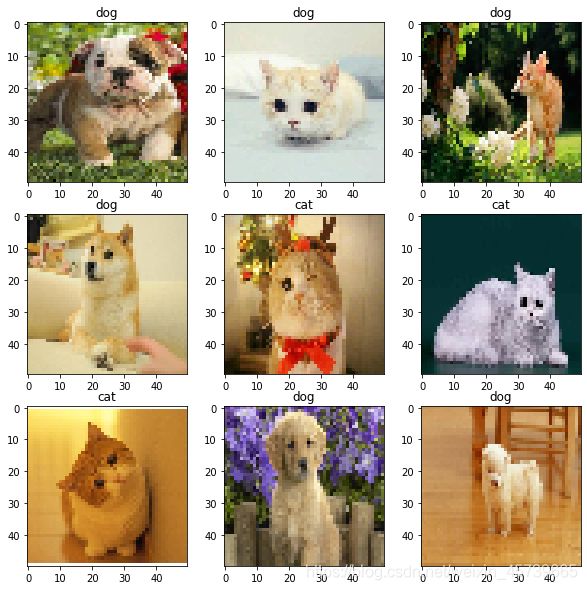
6.2基于数据,利用VGG16结构,提高猫狗识别的准确率
- 对单张图片,利用VGG16提取图像特征
- 对所有图片,利用VGG16进行特征提取,并把数据分为训练数据、测试数据两部分
- 对提取特征后的数据建立mlp模型,进行模型训练,计算模型在训练、测试数据集的准确率
- 对提供的1-9猫\狗模型,进行预测,将结果与任务一的结果进行对比
- 备注:数据分离参数,test_size=0.2,random_state=0
- mlp模型只有一个隐藏层(10个神经元),激活函数’relu’
from keras.preprocessing.image import load_img,img_to_array
img_path='1.png'
img=load_img(img_path,target_size=(224,224))
print(type(img))
import matplotlib.pyplot as plt
fig1=plt.figure()
plt.imshow(img)
img=img_to_array(img)
print(img.shape)
from keras.applications.vgg16 import preprocess_input
import numpy as np
x=np.expand_dims(img,axis=0)
x=preprocess_input(x)
print(x.shape)
from keras.applications.vgg16 import VGG16
model_vgg=VGG16(weights='imagenet',include_top=False)
feature=model_vgg.predict(x)
print(feature.shape)
feature=feature.reshape(1,7*7*512)
print(feature.shape)
from keras.preprocessing.image import img_to_array,load_img
from keras.applications.vgg16 import VGG16
from keras.applications.vgg16 import preprocess_input
import numpy as np
model_vgg = VGG16(weights='imagenet', include_top=False)
def modelProcess(img_path,model):
img = load_img(img_path, target_size=(224, 224))
img = img_to_array(img)
x = np.expand_dims(img,axis=0)
x = preprocess_input(x)
x_vgg = model.predict(x)
x_vgg = x_vgg.reshape(1,25088)
return x_vgg
import os
folder = "task2_data/cats"
dirs = os.listdir(folder)
img_path = []
for i in dirs:
if os.path.splitext(i)[1] == ".jpg":
img_path.append(i)
img_path = [folder+"//"+i for i in img_path]
features1 = np.zeros([len(img_path),25088])
for i in range(len(img_path)):
feature_i = modelProcess(img_path[i],model_vgg)
print('preprocessed:',img_path[i])
features1[i] = feature_i
folder = "task2_data/dogs"
dirs = os.listdir(folder)
img_path = []
for i in dirs:
if os.path.splitext(i)[1] == ".jpg":
img_path.append(i)
img_path = [folder+"//"+i for i in img_path]
features2 = np.zeros([len(img_path),25088])
for i in range(len(img_path)):
feature_i = modelProcess(img_path[i],model_vgg)
print('preprocessed:',img_path[i])
features2[i] = feature_i
print(features1.shape,features2.shape)
y1 = np.zeros(300)
y2 = np.ones(300)
X = np.concatenate((features1,features2),axis=0)
y = np.concatenate((y1,y2),axis=0)
y = y.reshape(-1,1)
print(X.shape,y.shape)
from sklearn.model_selection import train_test_split
X_train,X_test,y_train,y_test=train_test_split(X,y,test_size=0.2,random_state=0)
from keras.models import Sequential
from keras.layers import Dense
model=Sequential()
model.add(Dense(units=10,activation='relu',input_dim=25088))
model.add(Dense(units=1,activation='sigmoid'))
model.summary()
model.compile(optimizer='adam',loss='binary_crossentropy',metrics=['accuracy'])
model.fit(X_train,y_train,epochs=50)
from sklearn.metrics import accuracy_score
y_train_predict=model.predict_classes(X_train)
accuracy_train=accuracy_score(y_train,y_train_predict)
print(accuracy_train)
pic1='1.png'
pic1=load_img(pic1,target_size=(224,224))
pic1_array=img_to_array(pic1)
pic1_array=np.expand_dims(pic1_array,axis=0)
pic_array=preprocess_input(pic1_array)
pic1_features=model_vgg.predict(pic1_array)
pic1_feature=pic1_features.reshape(1,7*7*512)
result=model.predict_classes(pic1_feature)
print('dog' if result==1 else 'cat')
fig3=plt.figure()
plt.imshow(pic1)
a =[i for i in range(1,10)]
fig3=plt.figure(figsize=(10,10))
for i in a:
pic_name=str(i)+'.png'
pic1=pic_name
pic1=load_img(pic1,target_size=(224,224))
pic1_array=img_to_array(pic1)
pic1_array=np.expand_dims(pic1_array,axis=0)
pic_array=preprocess_input(pic1_array)
pic1_features=model_vgg.predict(pic1_array)
pic1_feature=pic1_features.reshape(1,7*7*512)
result=model.predict_classes(pic1_feature)
plt.subplot(3,3,i)
plt.imshow(pic1)
plt.title('dog' if result==1 else 'cat')
plt.xticks([])
plt.yticks([])
model.save('CatDog_model_VGG.h5')
